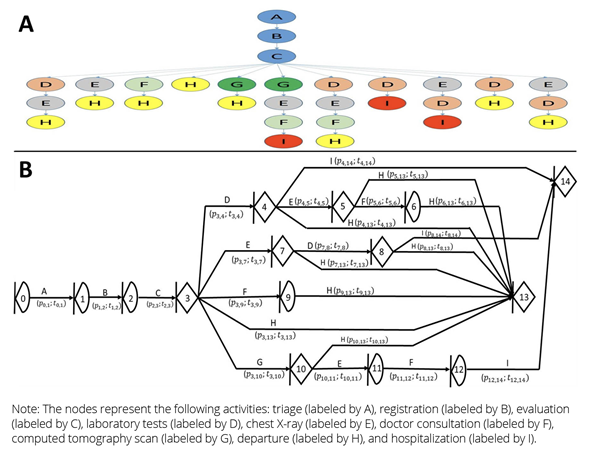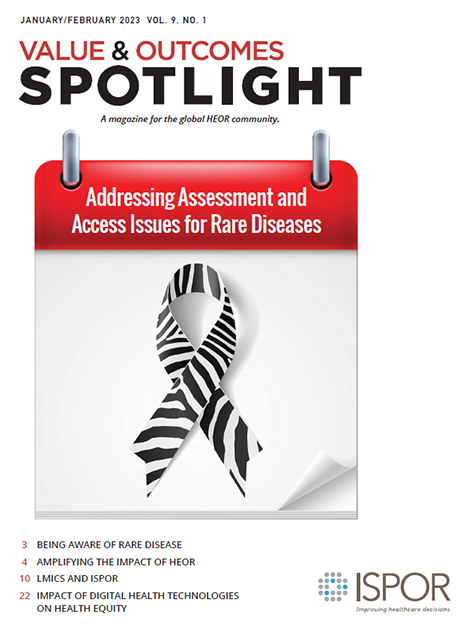A Data-Driven Approach to Support the Understanding and Improvement of Patients’ Journeys: A Case Study Using Electronic Health Records of an Emergency Department
Rismanchian F, Hosseinzadeh Kassani S, Mahdi Shavarani S, Lee YH. Value Health. 2023;26(1):18-27.
Section Editor: Agnes Benedict
Several terms describe the interactions and transitions of patients in a healthcare system: patient journey, patient flow, patient pathway. Researchers try to capture these concepts and extract the pathways to help policy makers improve healthcare delivery, including making hospitals more efficient by reducing costs and offering quality services to improve patients’ experience.1 Some involve patient interviews and qualitative research; others are based on the immense amount of data that is collected due to the increasing reliance of hospitals on information systems in order to operate on a day-to-day basis.
The understanding of what data analytics methods can deliver has also dramatically increased in the past 10 years. A standard approach to modeling for the purpose of making predictions is to build a theoretical model using current (sometimes qualitative) knowledge of the underlying mechanisms with some degrees of freedom in the parameters, and calibrating the model on specific data in order to make the model ready for prediction. These approaches generally seek a compromise between a theory of the underlying mechanisms and the observations. However, using the large amounts of data that have become available, there is more widespread use of approaches starting from the data itself, agnostic to the mechanisms (see de Hond 20222 for a description, quality issues, and guidelines in relation to data-driven prediction models applied to healthcare).
Figure. (A) Patient journey patterns discovered from the event log. (B) Representation in form of stochastic GERT network.

It is in this context that the authors of this paper propose a methodology to not only depict, but also to model and analyze the patient journey in general, using a data-driven technique called process mining. The authors illustrate the process by creating a model and analysis of performance indicators of data from an emergency department (ED) of a university hospital in Seoul, South Korea.
The data used consisted of patient-level logs of service usage (eg, registration, evaluation by a clinician, laboratory tests, imagery, hospital admission, or departure from the ED). In other words, the authors could follow the pathway of each patient within the ED, in each unit (eg, the laboratory test unit), and at each time stamp. The process-mining technique allowed them to derive a graphical process map. Data were extracted from an information system whose purpose is primarily administrative. Logs were removed from the analysis if they were incomplete or inconsistent (ie, in terms of timestamps). From the remaining logs, the authors built graphical representations—a process map—of the patients’ most typical pathways in the ED, as well as an analytical expression of performance indicators (eg, mean and variance of the full length of stay [LOS] in the ED, the probability of discharge and admission to a hospital ward).
Using graphical evaluation and review (Figure), the authors illustrated how their model and its analysis could generate hypotheses regarding the improvement of the efficiency of the ED. They found that in their case study, LOS was most dependent on the waiting time in the laboratory tests unit. Therefore, allocating more resources to this unit could support the reduction of mean LOS in the ED overall.
Limitations included that many logs had to be excluded, potentially leading to bias in the results, and there was substantial heterogeneity in the patient pathways that had to be distilled down to a few, and qualitative input from patients and healthcare provided should be used for the interpretation of results.
However, the proposed approach and the detailed documentation of the methods provide an objective and graphical description and analysis of the patients’ pathways in granular yet easily understood dimensions. The author’s approach has the potential to identify areas of process improvement and, more generally, areas of focus when seeking efficiency gains and reduced waiting time, ultimately improving the patient experience in a resource-constrained environment.
References:
1. Gualandi R, Masella C, Viglione D, Tartaglini D. Exploring the hospital patient journey: what does the patient experience? PLOS ONE. 2019;14(12): e0224899.
2. de Hond AAH, Leeuwenberg AM, Hooft L, et al. Guidelines and quality criteria for artificial intelligence-based prediction models in healthcare: a scoping review. NPJ Digit Med. 2022;5(1):2.

